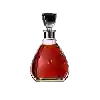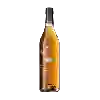
Chateau des HospicesCuvèe Paul Reig
This wine is a blend of 2 varietals which are the Cabernet-Sauvignon and the Merlot.
This wine generally goes well with beef, veal or pasta.
Food and wine pairings with Cuvèe Paul Reig
Pairings that work perfectly with Cuvèe Paul Reig
Original food and wine pairings with Cuvèe Paul Reig
The Cuvèe Paul Reig of Chateau des Hospices matches generally quite well with dishes of beef, pasta or veal such as recipes of roast pork with pineapple, pipe rigate bolognese sauce or osso buco.
Details and technical informations about Chateau des Hospices's Cuvèe Paul Reig.
Discover the grape variety: Cabernet-Sauvignon
Cabernet-Sauvignon noir is a grape variety that originated in France (Bordeaux). It produces a variety of grape specially used for wine making. It is rare to find this grape to eat on our tables. This variety of grape is characterized by small bunches, and small grapes. Cabernet-Sauvignon noir can be found in many vineyards: South-West, Loire Valley, Languedoc & Roussillon, Cognac, Bordeaux, Armagnac, Rhone Valley, Provence & Corsica, Savoie & Bugey, Beaujolais.
Informations about the Chateau des Hospices
The Chateau des Hospices is one of of the world's great estates. It offers 32 wines for sale in the of Banyuls to come and discover on site or to buy online.
The wine region of Banyuls
Banyuls wines come from the South-eastern Part of Roussillon, in the south of France, in the lower Pyrenees, a few kilometres from the Spanish border. These naturally Sweet wines are consumed both as an aperitif and as a dessert. They come in a wide range of hues, from GoldenGreen (Banyuls Blanc) to Amber (Banyuls Ambré) to the intense garnet of the standard Banyuls Rouge. Unusually among the natural sweet wines of France, all Banyuls wines are made primarily from Grenache grapes of various colors.
The wine region of Languedoc-Roussillon
Languedoc (formerly Coteaux du Languedoc) is a key appellation used in the Languedoc-Roussillon wine region of southern France. It covers Dry table wines of all three colors (red, white and rosé) from the entire region, but leaves Sweet and Sparkling wines to other more specialized appellations. About 75% of all Languedoc wines are red, with the remaining 25% split roughly down the middle between whites and rosés. The appellation covers most of the Languedoc region and almost a third of all the vineyards in France.
The word of the wine: Cellar master
The cellar master is the technical manager of a winery (usually a professional oenologist), who presides over and oversees the wine-making process and its maturation. Unlike an oenologist in a wine laboratory, who intervenes on an ad hoc basis to assist the winemaker, the cellar master is part of the estate's technical team.














